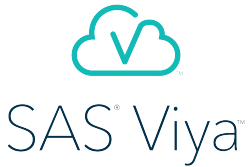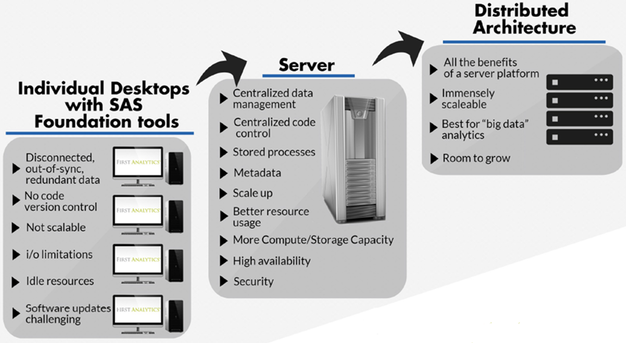SAS Viya: What We Learned at SAS Global Forum


Through our analytics platform services we help our clients “modernize” their use of SAS. Many analytics shops still operate under the individual desktop instance model. See the benefits of evolving into a server or grid (distributed) environment as depicted in the diagram below.

The new Viya offering from SAS provides all of the benefits of the server and grid platforms but adds even more capabilities, including the desired things we hear most often from our clients: the ability to operate in a private or public cloud and the flexibility to incorporate open source, like Python. At SAS Global Forum we saw some impressive new features, both in the presentations and through individual conversations with SAS developers. You can read about some of the high-level attributes of Viya here.
There is a lot to like in this new architecture, but we learned that while some features are ready today, many are not. A slew of them are slated for release in late November with more coming in 2018 and beyond.
Any organization operating at the individual desktop level needs to modernize. But with Viya on the horizon a road map should be constructed carefully. A hasty plan may result in additional unnecessary steps and costs along the way. While most of your current SAS programs will work as-is under Viya, there may need to be some modifications.
And to truly take advantage of the new architecture, some moderate re-writes will be in order. Primarily, the workplace server infrastructure, where your SAS programs run, is being replaced by Cloud Analytics Services (CAS). The difference? The former is single threaded, while CAS is able to run SAS on multiple threads/cores concurrently. Therefore, under Viya you will see new options in both data steps and procedures. And for some of the higher-end SAS products, such as data mining and forecasting, there are entirely new procedures. For example, if you are familiar with SAS Forecast Server, you will be impressed by new procedures, very similar to the current ones, that take tasks like model diagnosis and fitting and runs them in parallel across cores.
If you are already maturing your SAS operating model, a careful plan needs to be constructed so as to reap near-term benefits of the server or grid platform you planned for, yet be conducive to a smooth migration to Viya down the road. If you are just getting started now is the time to build Viya into your long term plan.